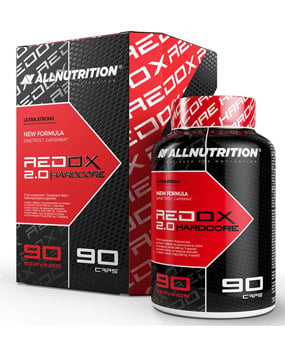Na poczatku nie wypada zacząć od tego tematu:
https://www.sfd.pl/Przedtreningowa_suplementacja__nieodzowna_cześć_potreningowej_suplementacji_-t702606.html
REE (ang. resting energy expenditure) spoczynkowy wydatek energetyczny.
Całkowity dzienny wydatek energetyczny (Total energy expenditure - TEE,lub tez daily energy expenditure - DEE) składa się z:
-spoczynkowy wydatek energetyczny (REE) zwykle 50-70%
-termiczny efect jedzenia (TEF) ~10%
-wydatek energetyczny indukowany wysiłkiem (activity induced energy expenditure, AEE) 20-40%
REE zalezy od płci,wieku,jak rowniez beztłuszczowej masy ciała jak i masy całkowitej,rowniez od cwiczen/aktywnosci
fizycznej,jak i od samego stopnia wytrenowania.
Wplyw spozycia bialka lub weglowodanów na REE
(przyspieszenie metabolzimu):
Timing protein intake increases energy expenditure 24 h after resistance training.
To determine whether protein supplementation (PRO) before an acute bout of heavy resistance training (HRT) would influence postexercise resting energy expenditure (REE) and the nonprotein respiratory exchange ratio (RER).
HYPOTHESIS:
REE would be increased and RER would be decreased up to 48 h after timed PRO and HRT compared with CHO supplementation and HRT.
METHODS:
Eight resistance-trained subjects (five men and three women) participated in a double-blind two-trial crossover design, where REE and RER were measured (7:00 a.m.) on four consecutive days. On the second day of trial 1, subjects consumed 376 kJ of either PRO (18 g of whey protein, 2 g of carbohydrate, 1.5 g of fat) or CHO (1 g of whey protein, 19 g of carbohydrate, 1 g of fat) 20 min before a single bout of HRT (nine exercises, 4 sets, 70%-75% 1-repetition maximum). REE and RER were measured 24 and 48 h after HRT. During trial 2, the same protocol was followed except subjects consumed the second supplement before HRT.
RESULTS:
Compared with baseline, REE was elevated significantly in both CHO and PRO at 24 and 48 h after HRT (P < 0.05). At 24 h after HRT, REE in response to PRO was significantly greater compared with CHO (P < 0.05). RER decreased significantly in both CHO and PRO at 24 h after HRT compared with baseline (P < 0.05). No differences were observed in total energy intake, macronutrient intake, or HRT volume (P > 0.05).
CONCLUSIONS:
Timing PRO before HRT may be a simple and effective strategy to increase energy expenditure by elevating REE the day after HRT. Increasing REE could facilitate reductions in body fat mass and improve body composition if nutritional intake is stable.
http://www.ncbi.nlm.nih.gov/pubmed/19997003
8 osob bralo udzial w dwoch 4-ro dniowych probach gdzie sppozywali:
-bialko 'PRO' (18 g of whey protein, 2 g of carbohydrate, 1.5 g of fat)
-węglowodany 'CHO' (1 g of whey protein, 19 g of carbohydrate, 1 g of fat)
20min przed treningiem
Mierzono poziom REE na poczatku,po 24h i po 48h.
wyniki:

po 24h:
Baseline (początek): 1730 kcal
CHO: 1790 kcal (+3.5% vs baseline)
PRO: 1880 kcal (+8.5% vs baseline)
po 48h:
podobnie w obu grupach
~+6% vs baseline
Dlaczego wieksze REE u grupy spozywającej bilako?
Wyjasnienie moze byc proste -> bialko spowodowało zwiększenie syntezy białek mięsniowych co jest procesem 'kosztownym' energetycznie.
Spozywanie bialka nie tylko spowoduje wzrost 'anabolizmu' ale wzrost REE rowniez spowoduje zmniejszenie tkanki tluszczowej,gdyz wiekszosc energi zostanie czerpana własnie z tluszczu zapasowego:
https://www.sfd.pl/EPOC__wysoka_intensywność_vs_niska_intensywność-t758627.html#post0
Zmieniony przez - solaros w dniu 2011-06-25 04:51:55
https://www.sfd.pl/Przedtreningowa_suplementacja__nieodzowna_cześć_potreningowej_suplementacji_-t702606.html
REE (ang. resting energy expenditure) spoczynkowy wydatek energetyczny.
Całkowity dzienny wydatek energetyczny (Total energy expenditure - TEE,lub tez daily energy expenditure - DEE) składa się z:
-spoczynkowy wydatek energetyczny (REE) zwykle 50-70%
-termiczny efect jedzenia (TEF) ~10%
-wydatek energetyczny indukowany wysiłkiem (activity induced energy expenditure, AEE) 20-40%
REE zalezy od płci,wieku,jak rowniez beztłuszczowej masy ciała jak i masy całkowitej,rowniez od cwiczen/aktywnosci
fizycznej,jak i od samego stopnia wytrenowania.
Wplyw spozycia bialka lub weglowodanów na REE
(przyspieszenie metabolzimu):
Timing protein intake increases energy expenditure 24 h after resistance training.
To determine whether protein supplementation (PRO) before an acute bout of heavy resistance training (HRT) would influence postexercise resting energy expenditure (REE) and the nonprotein respiratory exchange ratio (RER).
HYPOTHESIS:
REE would be increased and RER would be decreased up to 48 h after timed PRO and HRT compared with CHO supplementation and HRT.
METHODS:
Eight resistance-trained subjects (five men and three women) participated in a double-blind two-trial crossover design, where REE and RER were measured (7:00 a.m.) on four consecutive days. On the second day of trial 1, subjects consumed 376 kJ of either PRO (18 g of whey protein, 2 g of carbohydrate, 1.5 g of fat) or CHO (1 g of whey protein, 19 g of carbohydrate, 1 g of fat) 20 min before a single bout of HRT (nine exercises, 4 sets, 70%-75% 1-repetition maximum). REE and RER were measured 24 and 48 h after HRT. During trial 2, the same protocol was followed except subjects consumed the second supplement before HRT.
RESULTS:
Compared with baseline, REE was elevated significantly in both CHO and PRO at 24 and 48 h after HRT (P < 0.05). At 24 h after HRT, REE in response to PRO was significantly greater compared with CHO (P < 0.05). RER decreased significantly in both CHO and PRO at 24 h after HRT compared with baseline (P < 0.05). No differences were observed in total energy intake, macronutrient intake, or HRT volume (P > 0.05).
CONCLUSIONS:
Timing PRO before HRT may be a simple and effective strategy to increase energy expenditure by elevating REE the day after HRT. Increasing REE could facilitate reductions in body fat mass and improve body composition if nutritional intake is stable.
http://www.ncbi.nlm.nih.gov/pubmed/19997003
8 osob bralo udzial w dwoch 4-ro dniowych probach gdzie sppozywali:
-bialko 'PRO' (18 g of whey protein, 2 g of carbohydrate, 1.5 g of fat)
-węglowodany 'CHO' (1 g of whey protein, 19 g of carbohydrate, 1 g of fat)
20min przed treningiem
Mierzono poziom REE na poczatku,po 24h i po 48h.
wyniki:

po 24h:
Baseline (początek): 1730 kcal
CHO: 1790 kcal (+3.5% vs baseline)
PRO: 1880 kcal (+8.5% vs baseline)
po 48h:
podobnie w obu grupach
~+6% vs baseline
Dlaczego wieksze REE u grupy spozywającej bilako?
Wyjasnienie moze byc proste -> bialko spowodowało zwiększenie syntezy białek mięsniowych co jest procesem 'kosztownym' energetycznie.
Spozywanie bialka nie tylko spowoduje wzrost 'anabolizmu' ale wzrost REE rowniez spowoduje zmniejszenie tkanki tluszczowej,gdyz wiekszosc energi zostanie czerpana własnie z tluszczu zapasowego:
https://www.sfd.pl/EPOC__wysoka_intensywność_vs_niska_intensywność-t758627.html#post0
Zmieniony przez - solaros w dniu 2011-06-25 04:51:55
"Cóż jest trucizną?
Wszystko jest trucizną i nic nie jest trucizną, tylko dawka czyni, że dana substancja nie jest trucizną!".
BLOG: http://www.sfd.pl/t1033576.html


 Krzysztof Piekarz
Krzysztof Piekarz



